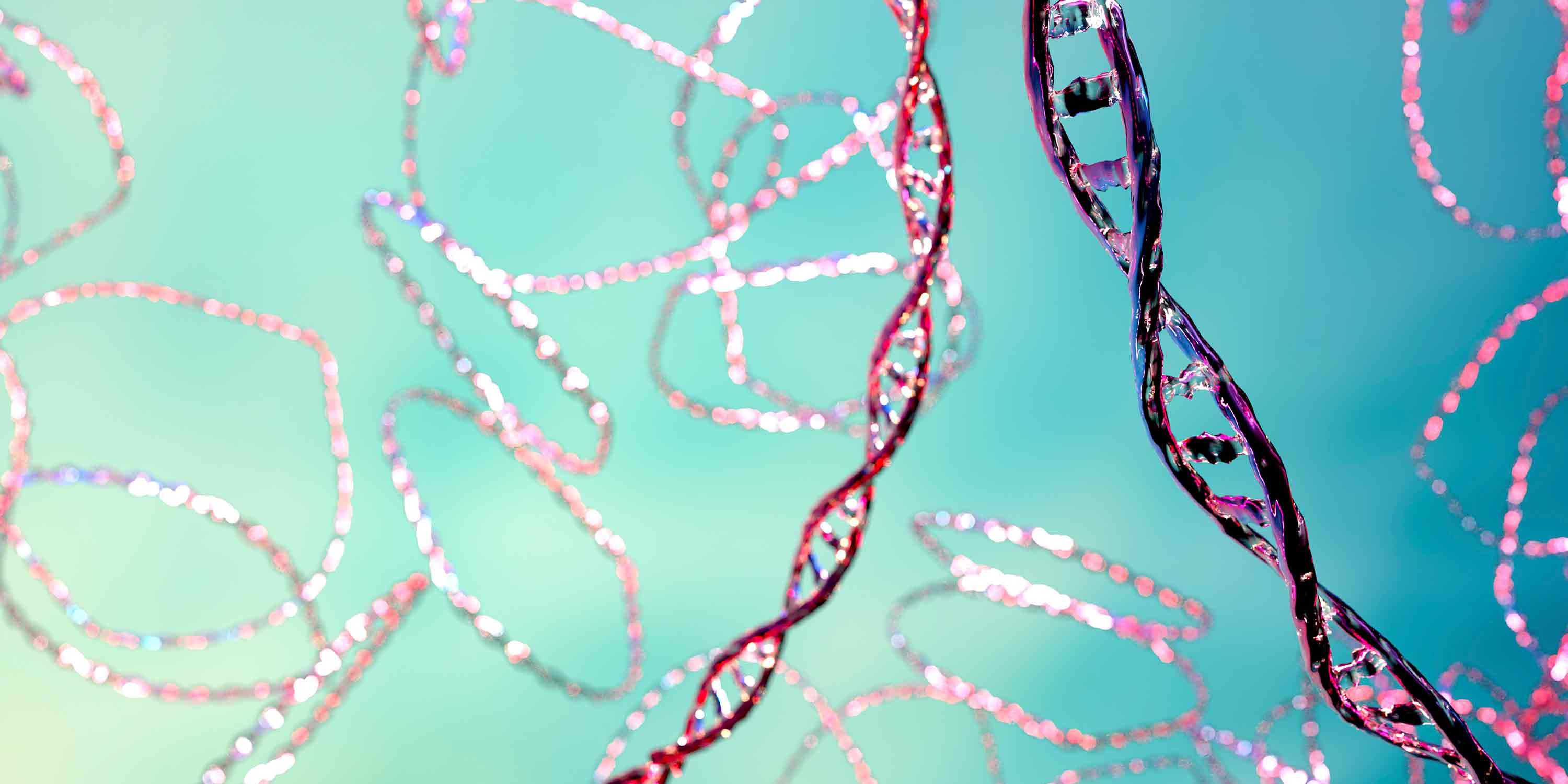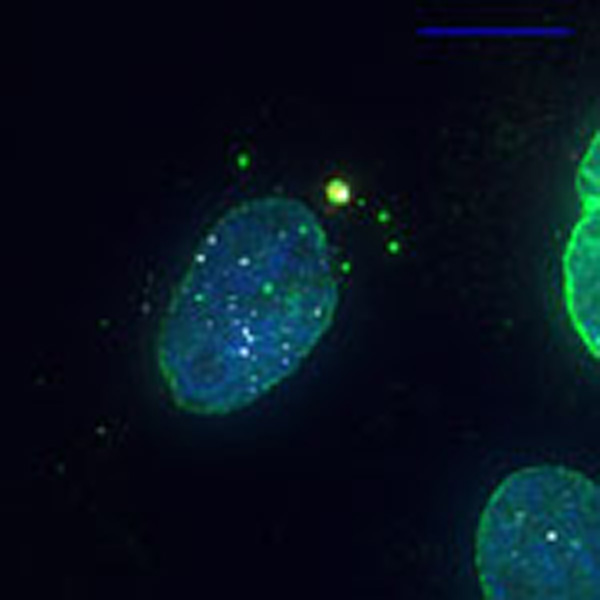
Cell biologists at ETH Zurich describe a new organelle present in mammalian cells that is made of rings of DNA. This container could potentially play a role in autoimmune diseases, and it could help researchers to understand how cell nuclei evolved.
In brief
- Researchers identified and characterized a new cellular compartment in vertebrate cells termed “exclusome” that might be a precursor of today’s eucaryotic nucleus.
- The study reveals that mammalian cells recognize, cluster, sort and keep extrachromosomal DNA - like transfected plasmid DNA and endogenous circular DNAs originating from telomeres of the chromosome - away from chromosomal DNA.
- That suggests that there is a cell autonomous genome defense system.
Even the remarkably familiar can sometimes yield new discoveries: researchers at ETH Zurich recently identified a previously unknown compartment in mammalian cells. They have named it the exclusome. It is made up of DNA rings known as plasmids. The researchers now published details of their discovery in the journal Molecular Biology of the Cell.
It was in the cell plasma that the researchers found this new compartment, that is rare and hasn’t been characterised before. This is exceptional because eukaryotic cells (cells with nuclei) usually keep most of their DNA in the cell nucleus, where it is organised into chromosomes.
Some of the plasmids that end up in the exclusome originate from outside the cell, while others – known as telomeric rings – come from the capped ends of chromosomes, the telomeres. Particularly in certain cancer cells, the ones from the telomers are regularly pinched off and joined together to form rings. However, these don’t contain the blueprints for proteins. The ETH researchers have become the first to show that the cell nucleus weeds out such DNA rings and deposits them, together with the plasmids coming from outside the cell, in the cell plasma.

This proves that cells are capable of differentiating between, on the one hand, DNA that is their own and still needed and, on the other hand, DNA that is foreign or presumably no longer required, which they then eject from the nucleus. “It’s one of the key hygiene functions cells perform to protect the chromosomes. Plasmids that can’t be separated off could theoretically embed themselves in the chromosomes. More likely is that the nuclear plasmid genes of viruses or bacteria are translated into proteins, which disrupts the cell physiology,” says Ruth Kroschewski from the Institute of Biochemistry at ETH Zurich.
Does the exclusome trigger autoimmune responses?
It’s not yet clear what other functions the exclusome performs. Kroschewski, who coordinated the study, believes the exclusome could play a role in cellular immunological memory. For many years now, biologists all over the world have been studying a special protein that latches on to DNA, especially to that found in cell plasma. It has already been established that this protein binds on to DNA rings as well. In doing so, it possibly triggers a signal cascade that prompts cells to produce and release inflammatory messenger substances. These tell the body that there might be a problem with a pathogen, such as a virus, that warrants an immune response.
Kroschewski and her team think it’s possible that the protein in question latches on to the DNA rings present in the exclusome, resulting in the prolonged illusion of an infection. “The body keeps getting the signal that the problem is still there,” says the researcher. This means the immune system has no choice but to respond to the inflammatory messenger, she says. “And as the pro-inflammatory signalling cascade doesn’t subside but rather continues, this may well facilitate autoimmune responses such as systemic lupus erythematosus,” Kroschewski explains.
A remnant of evolution
Kroschewski presumes that the exclusome dates back to early evolution when eukaryotes emerged. It’s commonly understood that the first eukaryotic cells resulted from the fusion of an early form of bacteria with an archaeon, a single-celled organism similar to a bacterium. Their ring-shaped DNA, which came from the two different organisms, had to be organised and protected against degradation. As evolution advanced, a mechanism developed to ensure that DNA molecules were automatically enclosed in a membrane envelope – which is happening at the newly discovered exclusome.
Although the exclusome envelope resembles that of the cell nucleus, it is much simpler, as Kroschewski explains: “The exclusome envelope features gaps that can be seen in the nuclear envelope only in the early stages of its formation.” In the case of the nuclear envelope, these gaps close over time or are filled in with specific pore proteins. By contrast, the exclusome envelope does not develop any further. “Perhaps the exclusome is a first attempt at producing a cell nucleus,” Kroschewski says.
Why plasmids get wrapped up in an incomplete membrane envelope remains unclear. “It looks like only chromosomal DNA is deemed ‘good enough’ to be encased within a fully formed nuclear envelope, and extra-chromosomal DNA is not,” Kroschewski says. Ring-shaped DNA from outside and self-made plasmids with the sequence from chromosome ends appear to lack the required characteristic. “We don’t yet know what this characteristic is,” Kroschewski says. The same holds true for so many aspects of this recently discovered organelle. The ETH cell biologist and her team now plan to unravel the mysteries of the exclusome by examining cellular changes at the plasmid DNA as well as the “licence” for depositing plasmids into the exclusome.
Reference
Schenkel L, Wang X, Le N, Burger M, Kroschewski R: A dedicated cytoplasmic container collects extra-chromosomal DNA away from the mammalian nucleus. Molecular Biology of the Cell, 29 September 2023, doi: external page 10.1091/mbc.E23-04-0118
Comments
No comments yet